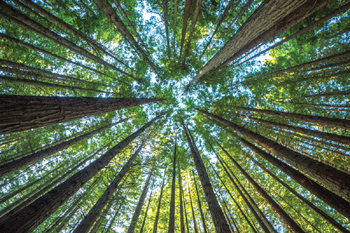Montana’s Outdoor Economy Big, Really Big!
What is the Outdoor Economy and how big is it?
In Montana it is really big – bigger than most may realize. Sure, everyone in Montana talks about their outdoor activities but is it really that different than what people everywhere do?
According to data from the Department of Labor and Industry, Montanans far exceed in their recreational activities what people in any other states do. Based upon the value of goods and services sold for outdoor recreation as a percentage of all production, Montana is way over the top. As a percentage of GDP (Gross Domestic Product) Montana goods and services for outdoor recreation is 4.4 percent compared to the second highest states – which are Wyoming, Alaska and Maine – at 3.6 percent.
It’s least in New York and Connecticut at 1.3 percent.
Logan Hendrix, Senior Economist for the Montana Department of Labor and Industry, writes, “Enjoying the outdoors can be as simple as going on a walk. Yet even simple pursuits involve ontributions from multiple industries. For example, fly fishing involves fly rod manufacturers, retail sellers of those rods, and fishing guides. There are also often transportation and lodging costs associated with getting someone casting. The outdoor economy encompasses all economic activity generated from outdoor recreation, including core and supportive activities. Outdoor recreation makes up a substantial component of Montana’s economy, generating $2.5 billion of annual gross domestic product (GDP) and accounting for 4.4% of total GDP in 2021. Only Hawaii has a greater concentration of outdoor recreation. Montana’s location in the Rocky Mountain West contributes to the state’s high concentration of outdoor recreation production. Other states in the region, like Wyoming and Idaho, also experience high levels of outdoor recreation.
Outdoor recreation production consists of both the recreational activities themselves (skis and lift tickets) as well as the supportive activities that make them possible (transport to the mountain and construction of chair lifts). About half of outdoor recreation production comes from recreational activities, generating $1.3 billion in GDP. The other half of economic activity comes from supportive activities such as lodging, food, transportation, and construction.
The largest activities are RVing and boating, generating $160 million and $110 million in GDP. These activities aren’t necessarily the most popular, but they generate the largest amounts of economic production due in part to the high equipment prices. The outdoor recreational activities that contribute the most to GDP are similar in Montana and the US— Montana just does relatively more of each activity.
Many outdoor activities increased in their economic production during the COVID pandemic, which could reflect increased popularity as people turned to outdoor opportunities for recreation. Several water activities had especially large increases. Canoeing and kayaking GDP more than doubled over these two years. RVing and tent camping GDP were both up over 30%, though RVing is a much larger component of GDP. Guided tours, hunting, shooting/archery, and biking all saw similarly large increases from 2019 to 2021.
The GDP associated with several activities fell in transporta tion GDP across the state during this from 2019 to 2021, including recreational flying, timeframe. 1 Rising fuel costs and supply chain sailing, and snow activities. The lack of widespread disruptions resulted in a drop in transportation vaccine availability in early 2021 disproportionally production in the state, especially for non-hurt winter outdoor activities like skiing and essential services like vacation travel, snowboarding. Economic activity from large Despite declines in outdoor recreation outdoor gatherings also remained depressed in transportation GDP, the number of out-of-state 2021 compared to 2019. Outdoor events like visitors has held steady. The Institute for Tourism festivals and concerts reported a 30% drop in GDP and Recreation Research (ITRR) estimates a over the two-year timeframe. similar number of visitors in 2021 as in 2019,


0 comments